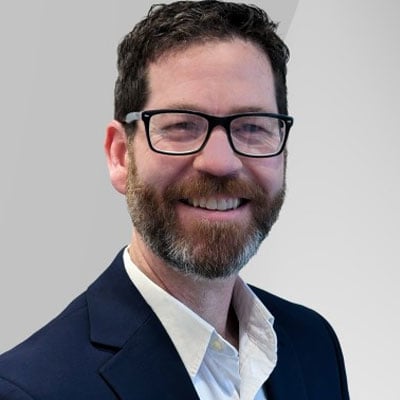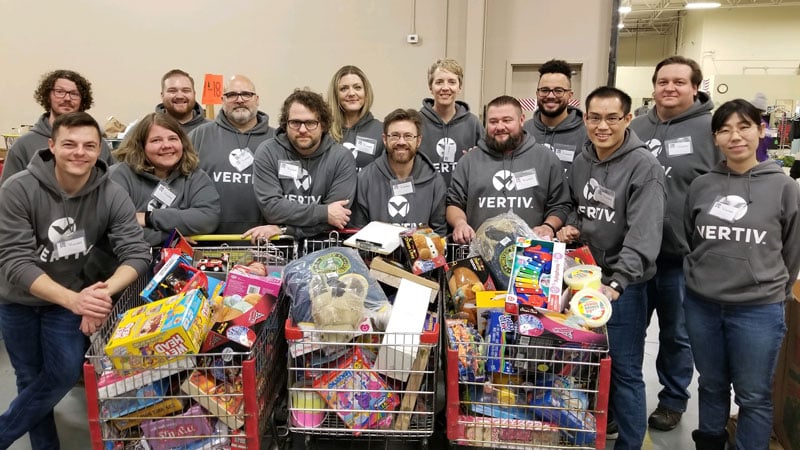The Role of the Data Center Industry on World Day for Health and Safety at Work
On this date, we want to not only reinforce the Vertiv Safety and Health Commitment but also to provide our users with advice and information on how Vertiv focuses on this critical topic.
As a company that values the well-being of our employees and customers, we recognize the importance of creating and maintaining a culture of safety and health in the workplace. In this post, Dan Rapp, director of manufacturing and environmental safety, will be discussing various measures and initiatives that we have implemented to ensure the safety and health of our employees and visitors, as well as exploring the impact of workplace safety on the productivity and success of our business.
What are some of the most common workplace hazards in a data center, and how does Vertiv ensure the safety of their employees in such an environment?
Data centers are a very controlled and generally safe environment, but there are still risks. Those who work on data center equipment need to be particularly aware of and knowledgeable about electrical and battery safety, especially for the high-power infrastructure equipment. There are also ergonomic risks, fall risks, and lacerations risks when working directly on equipment. People should use good ergonomic practices or lifting devices when moving heavy parts or equipment. One risk particular to data centers, is that they often have a raised floor to allow power and communications lines to run under the equipment instead of over it. This can create a fall hazard when floor panels are removed for service. Vertiv has formal and on-going training for field services employees, including the use of personal protective equipment (PPE), ladder safety, ergonomics, fall protection and safety around electrical equipment and arc flash hazards.
How do you balance the need for safety with the demands of a fast-paced data center environment, and what strategies have you found to be the most effective in achieving this balance?
Before I was with Vertiv I spent 10 years in the US Navy, working in the ngine rooms of nuclear-powered ships. I’ve been in the reactor compartments of nuclear-powered aircraft carriers, cruisers, and submarines. One thing I learned from this experience is that nothing is more important than safety. If the US Navy can take the time, and make the time, to do things right for its nuclear-powered fleet, then data center operators can do the same. For Vertiv’s part, we have strict rules and processes around how work is performed in these environments, especially around electrical equipment, and if something seems unsafe, our employees have the right and responsibility to stop the work until it is safe. To answer the question about how to increase the pace of data center work to meet the demand of the industry, the most effective way to do that is by designing the systems, equipment, and processes to allow faster and easier servicing while reducing the exposure of operators to safety risks.
How do we plan to continue promoting safety and health in the workplace beyond World Safety and Health Day?
Promoting safety and health and developing a strong culture of safety at Vertiv is always a primary concern. Throughout the year we promote communications like this one, highlighting the safety systems and processes we have in place and spreading positive stories of safety throughout the organization. Every day, there are thousands of positive safety interactions that you probably won’t hear about but that contribute to the core of our safety culture. One thing we can all do to continue promoting safety and health in the workplace throughout the year is to stop and thank employees who are doing things right. Creating positive safety experiences is one of the most powerful things we can do to promote a culture of safety at Vertiv.
What is the mission of Vertiv’s EHS Team, and what are some of the strategies implemented to ensure their success?
In our formal, the mission of the EHS team is to protect Vertiv and Vertiv’s employees from environmental, health, and safety risks so they can be prosperous and achieve their goals. As for strategy, there are dozens of specific programs I can point to, such as lockout-tagout, high work, machine guarding, etc. that help control specific aspects of workplace risks, but I think our EHS values really capture the essence of our overall strategy.
-
Use data to drive good safety decisions
-
Communication is key so safety success
-
Be good stewards of the company’s resources
-
Design the work environment and culture to support positive safety outcomes
-
Develop a world-class EHS team
-
Innovate relentlessly to streamline processes and eliminate waste
How do you ensure that visitors and contractors are aware of and adhere to your company's safety and health policies and protocols
Each location has a contractor safety program that ensures contractors are provided the rules for working safely while on site. We also verify licenses and certifications of contractors if certain jobs require it. Contractors bringing equipment such as scissor-lifts, or any type of hazardous chemicals, on site must notify the EHS team beforehand. If contractors will be working unsupervised, they must also go through orientation on safety rules and emergency procedures. Certain high-risk jobs, such as scaffolding or high work, require contractors to have a competent person on site to oversee the work and ensure safety protocols are followed continuously. Visitors arriving at Vertiv facilities are escorted by a Vertiv host who informs them of risks and how to travel safely through the facility, what to do in case of an emergency, and provides them with required protective equipment. Many locations that receive frequent visitors have well-developed and refined processes for this.
What role do employees play in maintaining a safe and healthy workplace, and how do you encourage them to be proactive in identifying and addressing potential hazards?
Employees obviously play a crucial role in maintaining a safe and healthy workplace. At a basic level, employees are responsible for following safety rules, using personal protective equipment, and participating in safety training and other programs. But they are often the first line of defense against workplace hazards. We strongly promote and encourage employees to report potential hazards and improvement ideas to their supervisors and through our safety Good Catch program. The safety program is a good way to capture and correct risks, and it’s also an excellent way to recognize and reward employees for their contribution to the safety of their workplace.
What advice would you give to the various data center companies around the world who are looking to improve their workplace safety and health practices?
I think the best advice I can give at the company level is that safety starts at the top. I’ve had the very fortunate experience to be part of two organizations that embrace safety as a core value (the US Navy and Vertiv). One of the most difficult things I think companies struggle with regarding safety is that it’s easy to take safety for granted when things are going well. Oil spills that occurred in the 2000's are a prime example and cautionary tale for every organization. They had an excellent and long-standing safety record before the incident, but follow-up investigations revealed underlying cracks in their systems. I encourage organizational leaders to keep safety front-and-center in their communications, policies, practices, and company metrics. Safety is an action word, and it takes continuously high effort over a long time to create and maintain a great safety culture and the results that follow.
Conclusion
World Day for Health and Safety at Work is an important reminder of the critical role that safety and health play in the workplace. It serves as an opportunity for employers and employees alike to reflect on their current safety practices and identify areas for improvement. By prioritizing safety and health in the workplace, we can create a safer and healthier working environment for everyone, which not only benefits employees but also leads to increased productivity and profitability for businesses. Let us all commit to promoting and practicing safety and health measures in our workplaces to ensure a better future for ourselves, our colleagues, and our communities. Remember, safety is everyone's responsibility!





